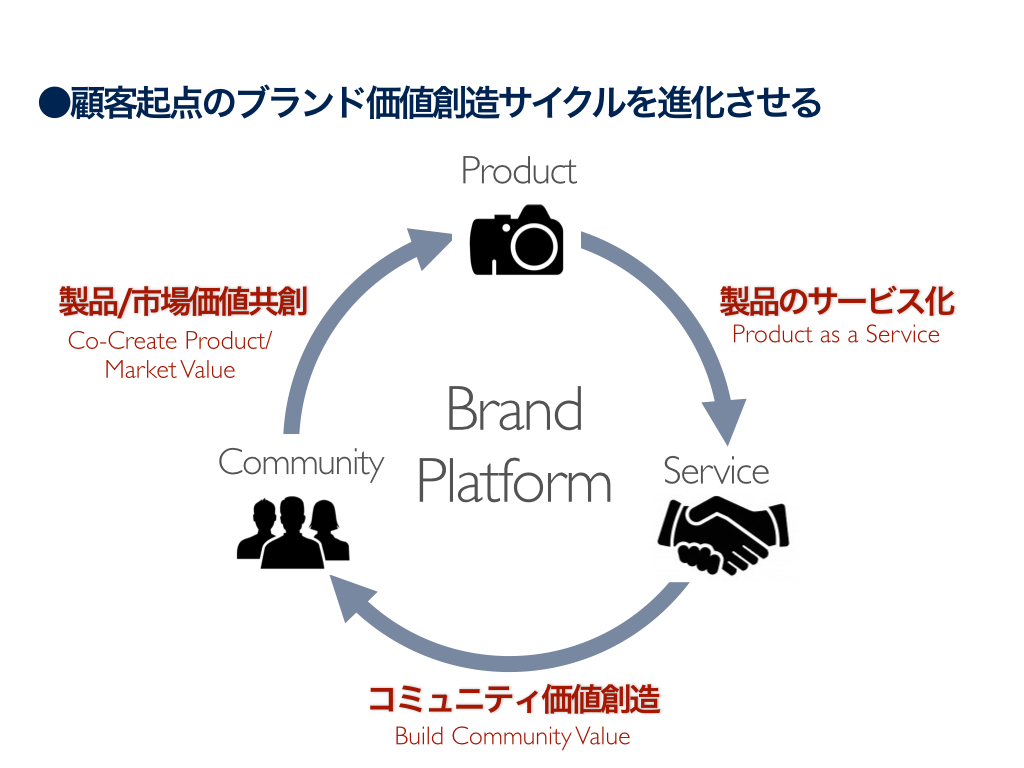Hello. This time, I'd like to discuss the "Brand Platform" that underpins brand strategy in the digital age.
To "place the brand on the digital stage"
The term "platform" is used in many different contexts, but here we define it as "a space where brands, customers, and stakeholders participate and connect to create sustainable value."
For example, member communities, subscription services, brand channels (e-commerce/physical stores), SNS accounts, apps/services, and networked products themselves can all become platforms. However, the term "platform" here refers to the overarching concept that encompasses these individual functions and touchpoints.
When considering branding today, creating a "customer relationship platform" where companies connect directly with customers online—not just through mass media communication—is becoming an increasingly critical challenge.
Ownership of a platform enables direct brand control and customer experience creation, facilitates continuous communication and stable customer base building, and allows value creation (co-creation) through customer feedback—generating significant opportunities for business and brand strategy.
Indeed, looking at the winning brands of the past decade—from IT service companies to manufacturing and retail—almost all have successfully built platforms connecting directly with customers, making this a major factor in their success.
In essence, brand platforms have become indispensable elements for bringing brand strategy into the arena of contemporary digital marketing.
Beyond Omnichannel: The Evolution of the Brand Value Creation Cycle
Recently, the concept of "omnichannel" has gained attention, particularly in retail. It involves seamlessly connecting various touchpoints—such as online channels and physical stores—according to an individual's purchasing process to achieve effective sales.
However, for manufacturers, the purpose of building platforms to connect directly with customers extends beyond sales strategies like e-commerce. More fundamentally, it's about creating customer-centric platforms for brand value creation that transcend mere sales channels.
Indeed, as seen in the rise of major retailers' private brands, the ability to offer value based on proximity to customers and customer data is becoming increasingly advantageous. This suggests that traditional brand marketing methods, which focused on differentiating products through image, are reaching their limits. Against this backdrop, manufacturers must also shift from a "product-centric" approach to strengthening a new "customer-centric" brand value creation cycle.

What fundamentally distinguishes this from traditional product branding?
To evolve the brand value creation cycle through platforms that connect directly with customers, there are three major dimensions:
① Product-as-a-Service
First, by transforming products into services, brands can provide customers with high-value purchasing experiences through platforms. Crucially, this goes beyond simply selling a product; it involves engaging in the post-purchase process to deliver service value that enhances the brand's utility and repeat purchase likelihood for customers.
Examples include customization and information delivery services leveraging customer data, as well as enhanced media content and membership services focused on achieving goals or solving problems beyond the product itself. This also presents an opportunity to expand revenue as a "brand service business."
② Community Value Creation
Second, by providing a space where people (customers and stakeholders) with shared interests or goals connect, brands gain the chance to form bonds not just through "products," but through "people."
Beyond the brand-individual relationship, this promotes user-driven activities that amplify brand value: community-driven motivation, leveraging collective intelligence, and participants creating and sharing content. Harley-Davidson, Nike, and GoPro are prime examples.
Of course, forming a community requires more than just platform mechanisms; it demands meaningful purpose, convenience, and centripetal force for participants. The key to success lies in how well the brand connects with people's lives and societal goals or themes.
③ Co-creation of Product/Market Value
Thirdly, by engaging in the user demand creation process even before the sales stage, brands can discover and co-create what users truly want, thereby activating their motivation to purchase and use the brand.
For example, the customer-participatory product development undertaken by brands like MUJI is not just about listening to customer voices; it's a process of creating demand itself through concept proposals.
Furthermore, as mentioned in the previous article, brands can enhance a product's self-expression value by amplifying user experiences and accelerate product innovation by leveraging feedback loops from user information.
Fundamentally, a brand signifies "value for the customer," extending beyond the product itself.
While "co-creation" with customers is a frequently used keyword lately, the idea of connecting with customers before product development to generate desires and expectations (demand), or connecting customers with each other (C2C or B2C) to create markets, should also be considered from the perspective of new customer-centric brand value creation.
In fact, this is where the most business innovation is currently occurring. Examples like the US-born Uber (taxi brokerage service) and Airbnb (accommodation brokerage service) demonstrate the potential for brands to create new business opportunities by brokering users' own businesses or creating platforms (markets) for content distribution.
Thus, a brand platform is not merely a platform for media or customer data management/CRM (Customer Relationship Management). It becomes the engine that drives a new customer-centric brand value creation cycle, revolutionizing business models and marketing processes.
This is precisely why many companies are strategically focusing on evolving their owned media (customer touchpoints like their own websites and channels).
Isn't it time to consider building a strategic brand platform that integrates and unifies fragmented customer touchpoints across media and channels—which are often divided by individual departments or objectives—to accelerate customer-centric business?
(Continued in Part 5 and beyond)




